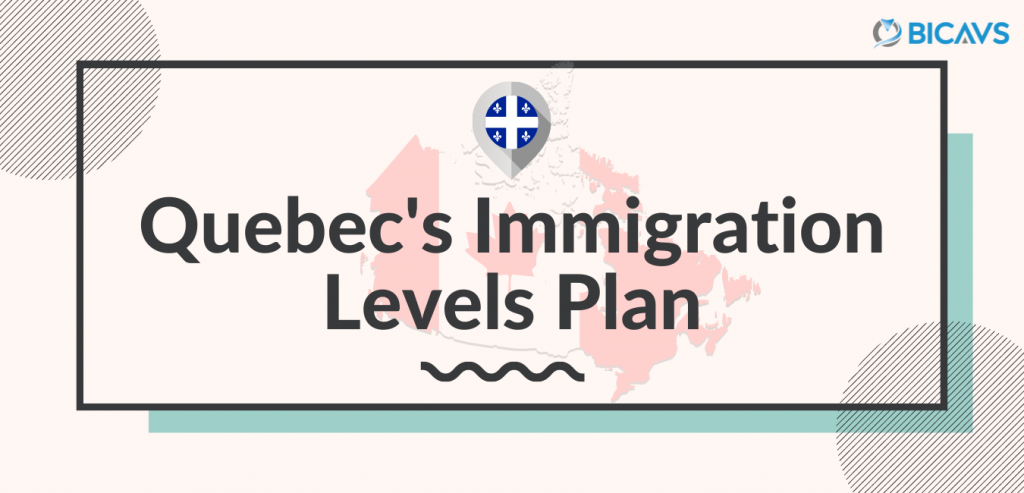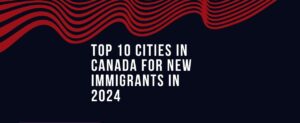Quebec’s immigration plan for 2021 aims to welcome up to 47,500 new permanent residents to the province through its various immigration programs.
The table below shows the total number of admissions, including ranges and targets by category for 2021. The table also highlights the percentage of economic admissions relative to total admissions in all immigration categories in Quebec.
As part of the Quebec Immigration Plan 2021, the province has set a target of 26,500 to 31,200 admissions in the categories that fall under its selection authority. These targets include between 19,400 and 22,400 skilled workers, between 1,500 and 2,300 business immigrants as well as between 5,600 and 6,500 other candidates in other economic immigration programs. Economic immigrants are expected to represent 62% of the overall target for total admissions to Quebec in 2021.
Moreover, the province plans to receive between 13,000 and 18,000 fewer immigrants than expected in 2020 as a result of the coronavirus pandemic. Overall admissions will therefore fall to a maximum of 30,500 instead of the planned 44,500. However, the province plans to make up the 2020 shortfall over the next two years. In 2021, up to 7,000 admissions could be processed in addition to the projected maximum of 47,500.
The table below shows the total number of selections in each immigration category for 2021. The table also highlights the percentage and proportion represented by economic immigration relative to all other immigration categories for the year 2021.
What is the Quebec Immigration Process?
Under the 1991 Canada-Quebec Accord, the Government of Quebec is responsible for selecting immigrants to the province. The selection process is managed by Quebec’s Immigration Ministry, the Ministère de l’Immigration, de la Francisation et de l’Intégration (MIFI).
The Quebec Selection Certificate or Certificat de sélection du Québec (CSQ) is a document issued by the MIFI that proves to Canada’s federal government that an applicant has been selected for immigration to Quebec. Immigration candidates who are issued a CSQ can then apply for permanent resident status with Immigration, Refugees and Citizenship Canada (IRCC).
The Quebec Immigration ministry:
- assesses foreign nationals’ eligibility for a CSQ under Quebec’s various economic immigration, business immigration, refugee and humanitarian categories; and
- issues CSQs to applicants who meet the criteria for immigration to Quebec.
The Government of Canada continues to oversee the following:
- security, criminal and medical background checks that determine the admissibility of new immigrants to Canada; and
- creation of categories and classes of immigration, allocating and enforcing annual immigration levels while taking into consideration the number of immigrants the Government of Quebec wishes to welcome in any given year.
This page summarizes the various Quebec economic immigration programs and outlines the provincial immigration targets/ranges under each category for 2021.
What are Quebec’s Economic Immigration Programs?
Foreign nationals who are interested in settling in Quebec can apply for a CSQ in one of the following economic immigration categories:
- Quebec Skilled Worker Program (QSWP), also known as the Regular Skilled Worker Program: This is Quebec’s key immigration category for skilled workers who want to become permanent residents of Canada, and reside in Quebec.
Under this program, the Government of Quebec applies a unique points system to prioritize potential candidates for a CSQ. Points are assigned based on ‘human capital factors’ that include education and training, skilled work experience, proficiency in English or French, among others. - Quebec Experience Class, Programme de l’expérience Québécoise (PEQ): The PEQ is a popular immigration option for international students who have obtained an eligible diploma from a Quebec post-secondary institution, and skilled workers with eligible work experience in the province.
- Quebec Business Immigration: Foreign nationals who can prove they have the resources can apply for immigration to Quebec under a wide range of business immigration programs for investors, entrepreneurs, and self-employed individuals.
Quebec’s Overall Immigration Plan for 2021
| Targets 2020 | Expected 2020 | Targets 2021 | ||||||
| Minimum | Maximum | Minimum | Maximum | Minimum | Maximum | Rebalancing | ||
| Economic immigration category | 25,500 | 26,300 | 14,000 | 17,000 | 27,500 | 29,300 | 4,600 | |
| Skilled Workers | 21,600 | 22,000 | 12,800 | 15,000 | 22,900 | 24,200 | 3,500 | |
| Business People | 3,300 | 3,600 | 1,000 | 1,600 | 4,000 | 4,300 | 1,000 | |
| Other Economic categories | 600 | 700 | 200 | 400 | 600 | 800 | 100 | |
| Family Reunification | 9,900 | 10,200 | 6,700 | 7,100 | 9,700 | 10,200 | 1,550 | |
| Refugees and people in similar situations | 7,200 | 7,500 | 4,400 | 5,800 | 6,900 | 7,500 | 850 | |
| Refugees selected abroad | 4,500 | 4,700 | 1,700 | 2,000 | 4,400 | 4,700 | 300 | |
| State-supported refugees | 1,300 | 1,350 | 300 | 500 | 1,300 | 1,350 | 150 | |
| Sponsored refugees | 3,200 | 3,350 | 1,400 | 1,500 | 3,100 | 3,350 | 150 | |
| Refugee recognized in Canada | 2,700 | 2,800 | 2,700 | 3,800 | 2,500 | 2,800 | 550 | |
| Other immigration categories | 400 | 500 | 500 | 600 | 400 | 500 | 0 | |
| Percentage selected by Quebec | 71% | 71% | 63% | 64% | 73% | 73% | 70% | |
| Percentage selected under an economic immigration program | 59% | 59% | 55% | 56% | 62% | 62% | 66% | |
| Percentage selected with French language proficiency | 49% | 49% | 59% | 59% | 56% | 56% | 56% | |
| Overall totals | 43,000 | 44,500 | 25,600 | 30,500 | 44,500 | 47,500 | 7,000 |








